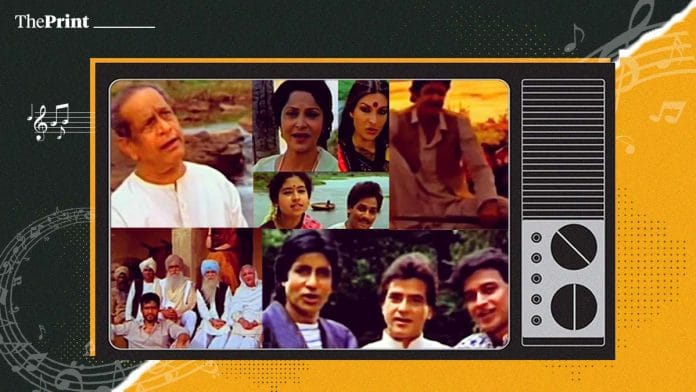Thank you dear subscribers, we are overwhelmed with your response.
Your Turn is a unique section from ThePrint featuring points of view from its subscribers. If you are a subscriber, have a point of view, please send it to us. If not, do subscribe here: https://theprint.in/subscribe/
We all love the flavor of nostalgia that helps us to deal with our present realities and helps us to have a breath of respite in a spirit of an optimistic hope that a light will certainly appear at the end of the dark and dungy tunnel. Our nation is a union of state as per the Article 1 of our Indian Constitution that states ‘India that is Bharat is a Union of States.’ Is one of the major idea that resonates with the essence of India’s democratic structure is ‘Unity in Diversity’. Mile Sur was telecasted for the first time on Independence Day, 1988, after the telecast of the Prime Minister’s speech from the ramparts of the Red Fort. ‘Mile Sur Mera Tumhara …’ featured actors Kamal Hassan, Amitabh Bachchan, Mithun Chakraborty, Revathi, Jeetendra, Waheeda Rehman, Hema Malini, Tanuja, Sharmila Tagore, Shabana Azmi, Deepa Sahi, Om Puri, Dina Pathak and Meenakshi Seshadri; dancer Mallika Sarabhai; cartoonist Mario Miranda; film-maker Mrinal Sen; authors Sunil Gangopadhyay and Annadashankar Ray; singers and musicians Bhimsen Joshi, M Balamuralikrishna, Lata Mangeshkar, Suchitra Mitra and Kavitha Krishnamurthy; sportsmen Narendra Hirwani, S Venkataraghavan, Prakash Padukone, Ramanathan Krishnan, Arun Lal, P. K. Banerjee, Chuni Goswami, Syed Kirmani, Leslie Claudius and Gurbux Singh besides a lot of common folks from across the country. In that day and age, there could not have been a bigger spectacle of national unity and togetherness.
Indian state has made relentless efforts in promoting the idea of ‘Unity in Diversity’ through timely interventions like promotional telecasting of socio-cultural folk songs, multiple form of performing arts that used to be telecasted on Doordarshan and Prasarbharti. The projection of the idea of Unity in Diversity comes very organically in the process of democratization of multicultural, ethnic, linguistic and religious society, when it gets transcended from the state to the society through different mediums of communication like television, radio and newspapers. Going back into the era of 60s to early 90s one can easily trace the golden period of Doordarshan and All India Radio. Doordarshan, All India Radio and Vived Bharti were known for broadcasting state sponsored programs and initiatives for promoting the idea of solidarity, tolerance, unity in diversity and fraternity. State also used these mediums to promote health care awareness, science, literacy and educational programs. The state led broadcast services were mainly focused on promoting the key cornerstone of our Indian Constitution like the preamble, fundamental rights and duties.
Living through the nostalgia of ‘Mile sur mera tumhara’ also gives us a sense of introspection as a nation state to reflect how much have we lost in the echos of jingoistic politics of symbolism and communalization of electoral politics in the present times. The elected government and state led independent organizations like Election Commission of India have an essential responsibility to promote and safeguard the value system upheld by our Indian Constitution. The lyrics of the song ‘Mile Sur Mera Tumhara’ resonates with the idea of India as a nation of collective identities that brings together different regions, religions, cultures and ethnicities together. In 1988 when the song was televised, it almost gave a feeling as close to a national anthem. The song even had a very strong visual appeal that blended well with the lyrics. One more song that was televised on Doordharshan around the same era was ‘Baje sargam har taraf se’. This song too uplifted the spirit of nationalism and integrity. Living in the phase of nostalgia can at times be cathartic to induce to the feeling of insightful introspection. The sentiments become even stronger during the elcction season like at present. Our cultural heritage and legacy speaks volumes of the promotion and projection of unity in plurality and diversity. The need is to boost this sentiment more effectively to resurrect the golden era of often talked about ‘Swarn Kal’.
These pieces are being published as they have been received – they have not been edited/fact-checked by ThePrint.


